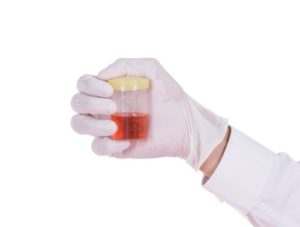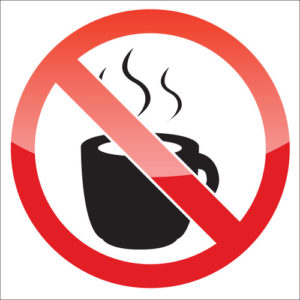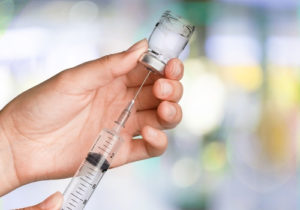
- Call : + 07523 300822
- Email : team@herefordshireurology.co.uk

Bladder Infections
Bladder infections or urinary tract infections (UTI) are common. In women they occur most commonly in early adult life or after the menopause. Recurrent UTI require further assessment to ensure that there are no serious underlying conditions. Delaying investigation may mean delaying discovery and treatment of serious conditions such as bladder cancer. Treatment options range from lifestyle changes to the treatment of underlying bladder or kidney conditions.

In the Urology clinic we provide full assessment, investigation and treatment to allow you to take back control of your bladder. These include cystoscopy, ultrasound scanning and consideration of bladder instillations such as cystistat amongst other therapies.
Bladder pain
Bladder pain syndrome, interstitial cystitis and chronic pelvic pain syndrome are a range of serious and debilitating conditions which affect the bladder often causing a serious impact on quality of life. These conditions often occur with other symptoms such as incontinence and frequent voiding (urgency). They require specialist assessment, investigation and management. The treatments are tailored to the severity of the disease. Although the exact cause has not been established, current theories suggest a defect in the protective layers of the lining of the bladder leading to inflammation of the bladder wall itself. Treatments may include dietary modification (avoidance of common trigger foods), drug therapy, bladder instillations or surgery.
Assessment and treatment focus on identifying any underlying problems with the bladder. Your consultant will talk through your symptoms with you (history) and perform a focussed clinical examination. The investigations required are very variable but may include flow tests, a bladder scan or urodynamic testing. Mr Nayar may ask you to record your fluid intake and how much urine you produce each day (input/output chart), as well as a questionnaire to assess the severity of your bladder pain and the impact on your quality of life (Bladder pain questionnaire). You may need a cystoscopy to inspect the lining of the bladder.
Blood in the urine (Haematuria)
Blood in the urine (haematuria) can be either visible or nonvisible. Visible blood is seen as red urine which can be at the beginning, end or throughout the urine stream. If there is a significant amount of bleeding clots can form within the bladder, these can be passed as lumps in the urine or can cause difficulty in voiding.

The bleeding may be painless or associated with pain or dysuria (a burning or stinging sensation when passing urine).
Non-visible bleeding is usually detected by dipstick testing of the urine either as part of a general health screen or because of difficulty in voiding due to pain.
Many conditions can cause blood in the urine, including cancer, infection and inflammation of the urinary tract. The risk of cancer is higher for people with painless visible bleeding, but all bleeding should be taken seriously and discussed with your doctor.
Investigations
There are many tests that people who have blood in their urine may require. After an initial consultation and examination by a doctor, these may include blood and urine tests, a scan of the kidneys and bladder and a cystoscopy (a telescope test to look at the internal lining of the bladder).
Bladder Cancer
The most common symptom of bladder cancer is haematuria (blood in the urine), however this can occur due to other conditions such as infection and kidney stones. The initial tests required to investigate haematuria are listed above. If a bladder cancer is discovered then an operation called a Trans-urethral resection of bladder tumour (TURBT) is performed. 70-80 % of patients will have a bladder cancer growing on the surface lining of the bladder; this is cured by the initial operation but will need careful and regular follow up. High risk patients with aggressive tumours may need chemical treatments into the bladder such as Mitomycin C or Bacillus Calmette Guerin (BCG).

If the bladder cancer has invaded the muscular coats of the bladder then further treatment with chemotherapy and either radiotherapy or surgical removal of the bladder is required.
Frequent Voiding
Frequent voiding also known as the overactive bladder syndrome is a common problem. It affects women more often than men.
Overactive bladder syndrome is defined as: urgency with or without urge incontinence, usually with frequency and nocturia
It can severely affect patients’ quality of life. Treatment in the past has initially been with lifestyle advice such as cutting down on caffeinated drinks (such as tea, coffee, cola and energy drinks), moderating fluid intake and bladder training.
If simple lifestyle measures do not work then the next line in therapy is to consider medication.
If this fails after assessment of your symptoms your consultant may suggest other minimally invasive techniques such as cystoscopic injection of botox into the bladder wall.
Assessment of the overactive bladder
Assessment and treatment concentrate on identifying the underlying problems with the bladder. Your consultant will talk with you about your symptoms and then examine you. The investigations required may include flow tests, a bladder scan or urodynamics (pressure flow testing of the bladder).
Your Consultant may ask you to record your fluid intake and how much urine you produce each day (input/output chart) or fill in a symptom questionnaire (download the overactive bladder questionnaire) you may need a cystoscopy (telescope examination of the lining of the bladder).
The management of the overactive bladder ranges from simple lifestyle measures to more complex treatments. The management of overactive bladder is best thought of as steps:
Step 1 – lifestyle changes and pelvic floor exercises

By decreasing your caffeinated fluid intake (Coffee, tea, cola, energy drinks) many patients will improve their frequent voiding. Simply avoiding diuretics can give relief.
Step 2 – medication

Medications can be very effective in improving overactive bladder symptoms. These medications are called anticholinergics help to relax the bladder allowing the bladder to store more urine and give more warning when needing to pass urine resulting in decreased urgency and urgency incontinence.
Step 3 – botox injections

If the first 2 steps have not been effective, the overactive bladder can often be successfully treated with intravesical botox injections. During this procedure a cystoscope is passed into the bladder and multiple small amounts of botox are injected into the bladder. This can be formed under a general or local anaesthetic and can be repeated as necessary. This procedure requires a thorough discussion with your consultant before it is performed.